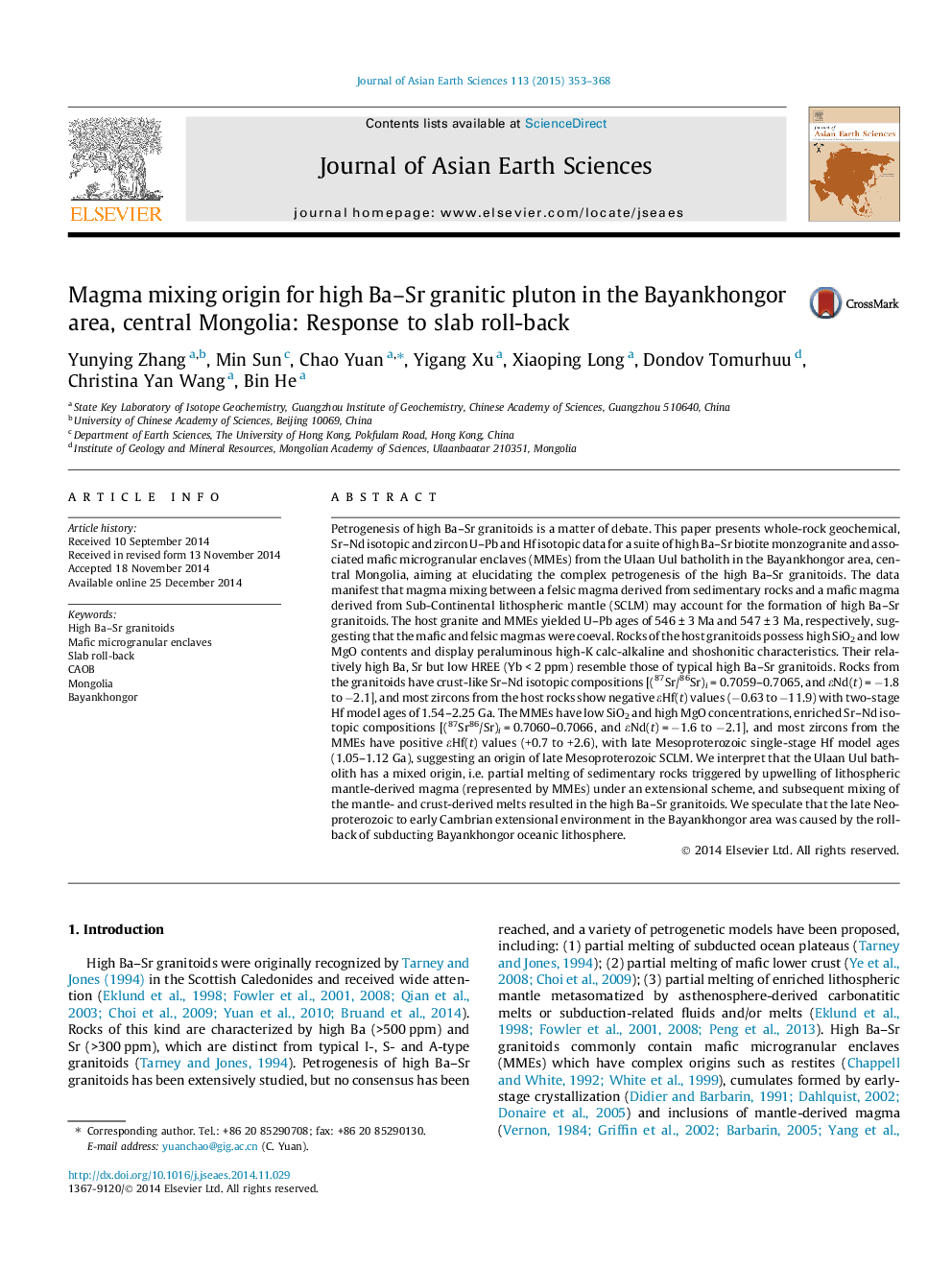| کد مقاله | کد نشریه | سال انتشار | مقاله انگلیسی | نسخه تمام متن |
|---|---|---|---|---|
| 4730233 | 1356743 | 2015 | 16 صفحه PDF | دانلود رایگان |

• The high Ba–Sr Ulaan Uul batholith and associated MMEs formed at ca. 547 Ma.
• MMEs originated from partial melting of a metasomatized lithospheric mantle.
• Crust–mantle magma mixing accounts for the high Ba–Sr granitoids.
• Tectonic response to the roll-back of subducted Bayankhongor oceanic lithosphere.
Petrogenesis of high Ba–Sr granitoids is a matter of debate. This paper presents whole-rock geochemical, Sr–Nd isotopic and zircon U–Pb and Hf isotopic data for a suite of high Ba–Sr biotite monzogranite and associated mafic microgranular enclaves (MMEs) from the Ulaan Uul batholith in the Bayankhongor area, central Mongolia, aiming at elucidating the complex petrogenesis of the high Ba–Sr granitoids. The data manifest that magma mixing between a felsic magma derived from sedimentary rocks and a mafic magma derived from Sub-Continental lithospheric mantle (SCLM) may account for the formation of high Ba–Sr granitoids. The host granite and MMEs yielded U–Pb ages of 546 ± 3 Ma and 547 ± 3 Ma, respectively, suggesting that the mafic and felsic magmas were coeval. Rocks of the host granitoids possess high SiO2 and low MgO contents and display peraluminous high-K calc-alkaline and shoshonitic characteristics. Their relatively high Ba, Sr but low HREE (Yb < 2 ppm) resemble those of typical high Ba–Sr granitoids. Rocks from the granitoids have crust-like Sr–Nd isotopic compositions [(87Sr/86Sr)i = 0.7059–0.7065, and εNd(t) = −1.8 to −2.1], and most zircons from the host rocks show negative εHf(t) values (−0.63 to −11.9) with two-stage Hf model ages of 1.54–2.25 Ga. The MMEs have low SiO2 and high MgO concentrations, enriched Sr–Nd isotopic compositions [(87Sr86/Sr)i = 0.7060–0.7066, and εNd(t) = −1.6 to −2.1], and most zircons from the MMEs have positive εHf(t) values (+0.7 to +2.6), with late Mesoproterozoic single-stage Hf model ages (1.05–1.12 Ga), suggesting an origin of late Mesoproterozoic SCLM. We interpret that the Ulaan Uul batholith has a mixed origin, i.e. partial melting of sedimentary rocks triggered by upwelling of lithospheric mantle-derived magma (represented by MMEs) under an extensional scheme, and subsequent mixing of the mantle- and crust-derived melts resulted in the high Ba–Sr granitoids. We speculate that the late Neoproterozoic to early Cambrian extensional environment in the Bayankhongor area was caused by the roll-back of subducting Bayankhongor oceanic lithosphere.
Figure optionsDownload as PowerPoint slide
Journal: Journal of Asian Earth Sciences - Volume 113, Part 1, 1 December 2015, Pages 353–368